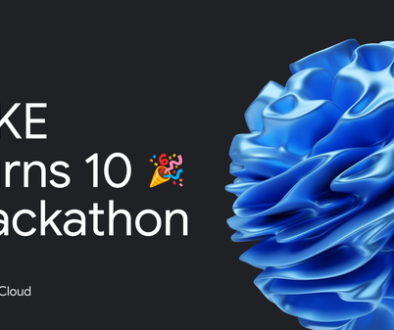GCP – Top 9 posts from Google Cloud in 2020
In 2020, everything changed. Who would have expected that how we live, work, communicate, and learn would be different by the end of the year? At Google Cloud, we saw how COVID-19 forced changes not only in how our customers worked in offices, but also how software developers and IT practitioners innovated. To support these changes, we introduced new products, features, and resources to address the needs we hear most from our customers: how to better connect people, how to get smarter with your data, how to build faster, and how to do this all with the confidence that your data is safe. Meeting your customers’ needs is essential, and so is empowering your employees with the tools and information they need in real time.
Here, we take a look back at the year’s most popular posts from the Google Cloud blog:
1. Google Workspace brought productivity to a new level
The arrival of Google Workspaceallowed our customers to better connect their workforce with the tools they needed to get anything done, in one place. It included everything our customers loved about G Suite, including all of the familiar productivity apps—Gmail, Calendar, Drive, Docs, Sheets, Slides, Meet—and added a new, deeply integrated user experience. For example, we introduced new ways that core Workspace tools like video, chat, email, files, and tasks became more deeply integrated, powerful, and efficient.
2. New features and security measures made Google Meet the place to be
2020 was all about connecting virtually. As more employees, educators, and students worked remotely in response to the spread of COVID-19, we wanted to help them stay connected and productive. We rolled out free access to our advanced Google Meet video-conferencing capabilities to all G Suite and G Suite for Education customers globally through September. We added features such as support for larger meetings for up to 250 participants per call; live streaming for up to 100,000 viewers; and the ability to record meetings and save them to Google Drive.
We also rolled out other top-requested features, including tiled layouts, low-light mode, noise cancellation, and others. And as the year progressed, we never stopped innovating, introducing Meet on the Nest Hub Max, customizable backgrounds, and moderation controls like meeting attendance, Q&A, and polling.
We also shared the array of counter-abuse protections we built to give you confidence that your meetings are safe, including anti-hijacking measures for both web meetings and dial-ins and browser-based security features, 2-step Verification, and our Advanced Protection Program. For schools, we introduced several features to improve the remote learning experiences for teachers and students.
3. Google Cloud learning resources connected cloud students with new topics
To help you transition to remote work and learning, we shared details about our Google Cloud learning resources, which you can use at home. These include our extensive catalog of over 100 on-demand training courses on Pluralsight and Coursera designed to get you started on the path to certification in cloud architecture, data engineering, and machine learning; hands-on labs on Qwiklabs; and interactive webinars at no cost for 30 days, so you can gain cloud experience—and get smarter about cloud—no matter where you are.
4. The COVID-19 public dataset program opened up a world of research possibilities
To aid researchers, data scientists, and analysts in the fight against COVID-19, we made a hosted repository of public datasets, like our COVID-19 Open Data dataset, free to access and query through our COVID-19 Public Dataset Program. Researchers can also use BigQuery MLto train advanced machine learning models with this data right inside BigQuery at no additional cost.
5. Google Cloud’s coronavirus response combined business continuity, monitoring, free resources, and more
With all of the challenges impacting our customers, we wanted to give them confidence that our people were here when you needed them. We outlined all of the measures we take to make our services available to customers everywhere during the pandemic and beyond. These include regular disaster recovery testing (DiRT) of our infrastructure and processes; multiple SRE coverage areas; compute and storage hardware capacity monitoring and reserves; remote access and backup contingencies for our support teams; enhanced support structure for customers on the front lines; and free access to the premium version of Hangouts Meet to existing customers.
6. AppSheet empowered citizen app developers with no-code
We were proud to share that Google acquired AppSheet, a leading no-code application development platform used by enterprises across a variety of industries. This acquisition helps enterprises empower millions of citizen developers to more easily and quickly create and extend applications without the need for professional coding skills. Employees will be able to develop richer applications at scale that use Google Sheets and Forms, and top Google technologies like Android, Maps, and Google Analytics. In addition, AppSheet customers can continue to integrate with a number of cloud-hosted data sources, including Salesforce, Dropbox, AWS DynamoDB, and MySQL.
7. API experts brought order to complex design decisions
As many software developers know, there are two primary models for API design: RPC and REST. Most modern APIs are implemented by mapping them to the same HTTP protocol. It’s also common for RPC API designs to adopt one or two ideas from HTTP while staying within the RPC model, which has increased the range of choices that an API designer faces. We looked at the choices and offered guidance on how to choose between them, focusing on gRPC, OpenAPI, and REST—three significant and distinct approaches for building APIs that use HTTP.
8. Google Cloud detective work solved a tricky networking problem
If you’ve ever wondered how Google Cloud Technical Solutions Engineers (TSE) approach your support cases, we offered a Google Cloud mystery story—the case of the missing DNS packets. Follow along to see how they worked closely with our customer to gather information in the course of their troubleshooting, and how they reasoned their way through to a resolution. This true story offers insight into what to expect the next time you submit a ticket to Google Cloud support.
9. Google Cloud Next ‘20: OnAir lit up the digital stage
Finally, to keep you up to date with all of the important announcements made at Google Cloud Next ‘20: On Air, we offered a week-by-week breakdown focused on product areas like application development, artificial intelligence and machine learning, databases, data analytics and much more. Check out the blog for the full list.
That’s a wrap for 2020! Keep coming back to the Google Cloud blog for announcements, helpful advice, customer stories, and more in 2021.
Read More for the details.




